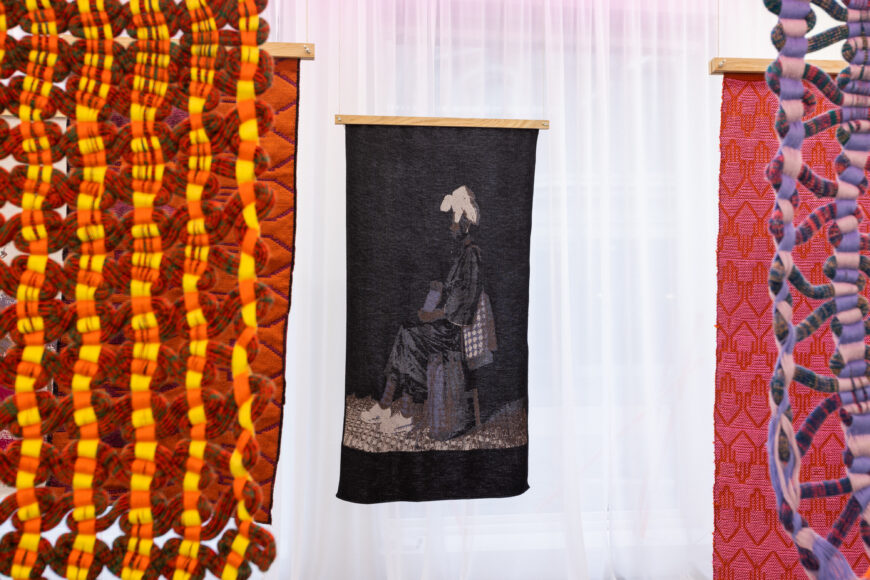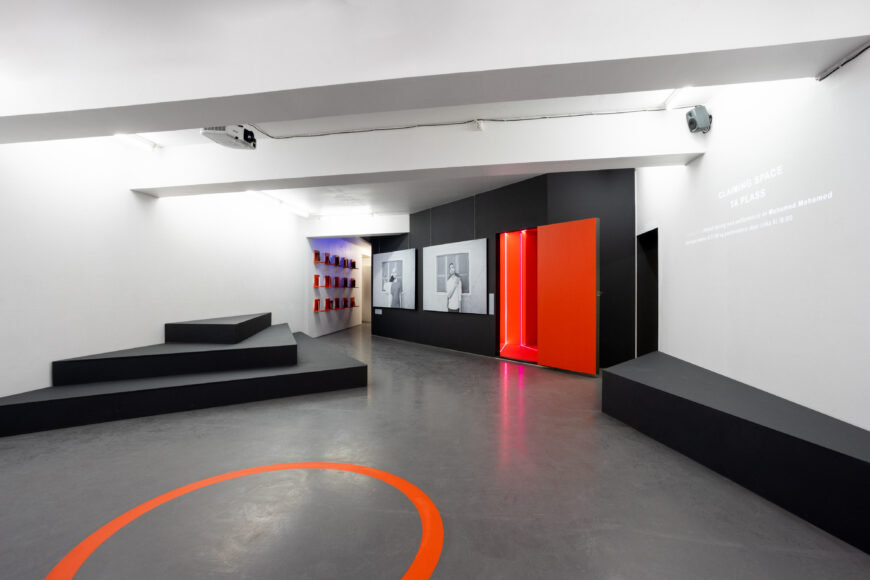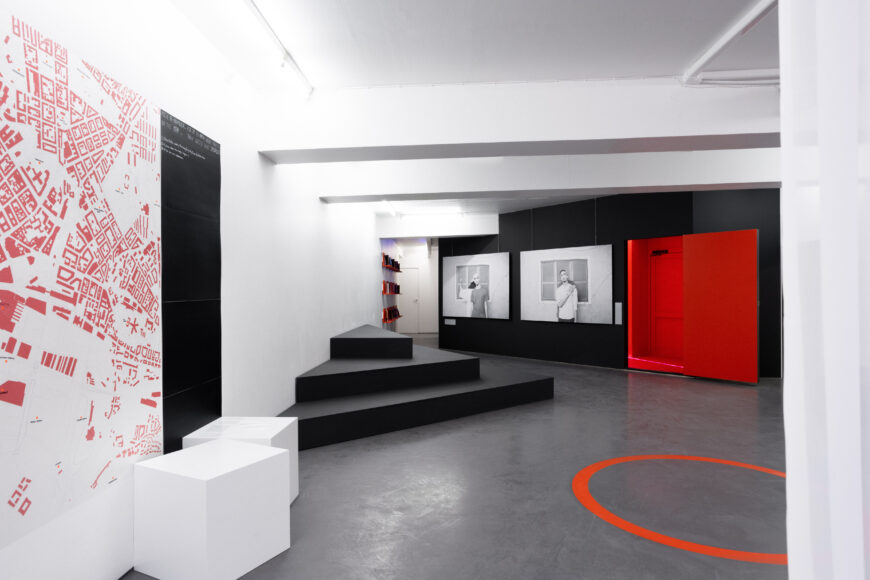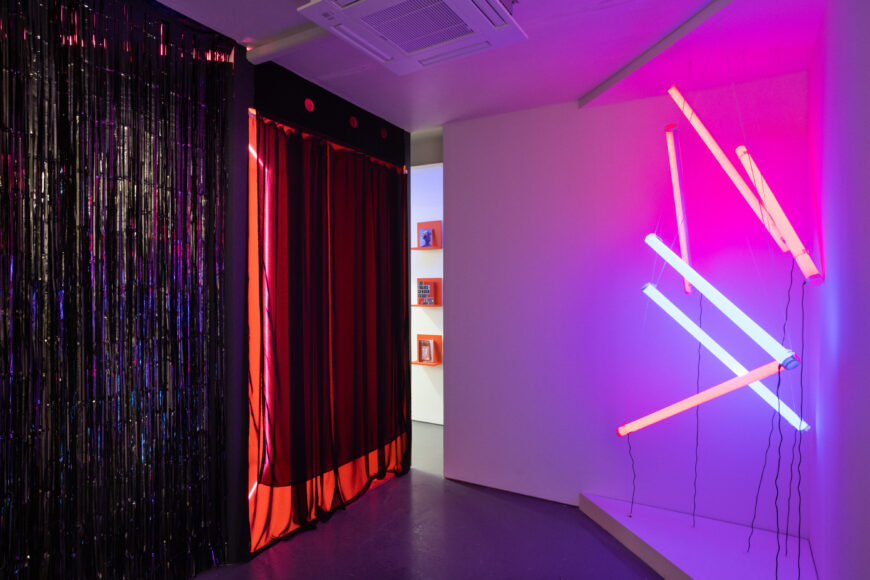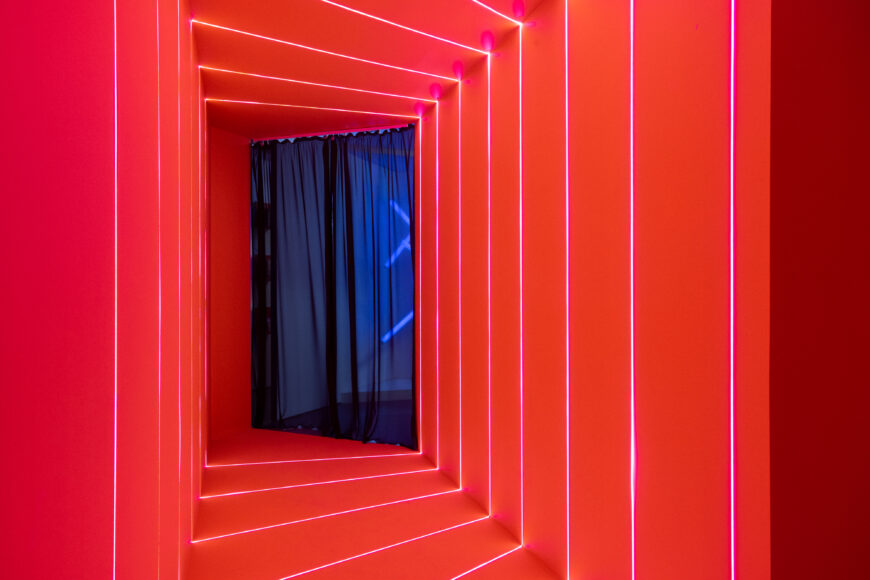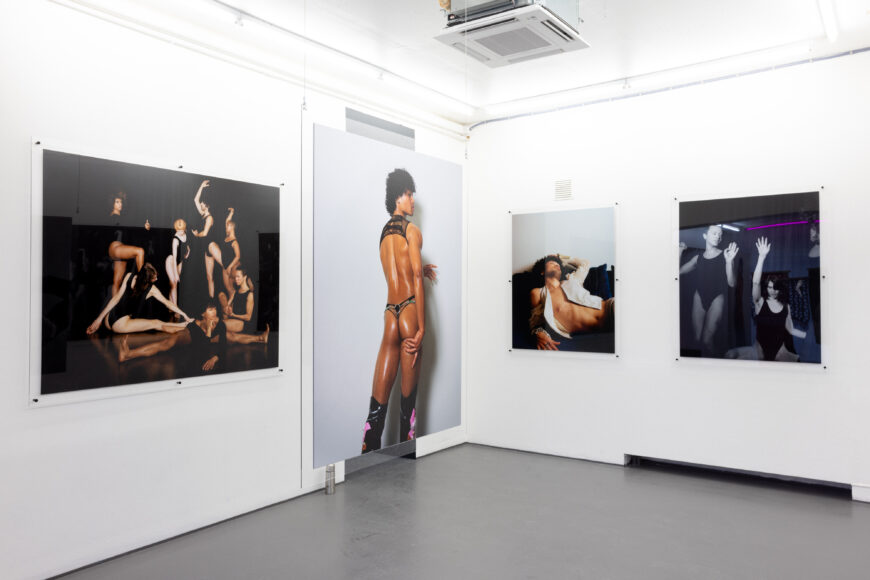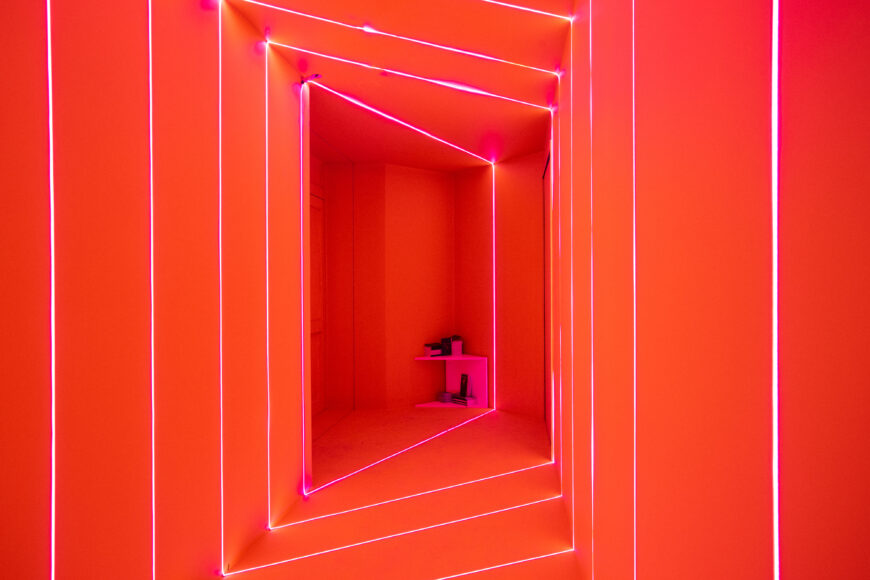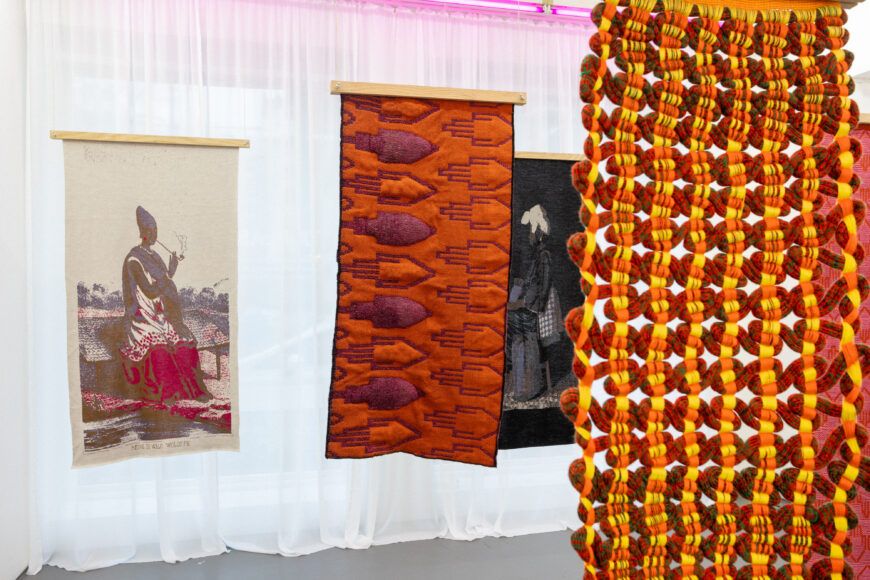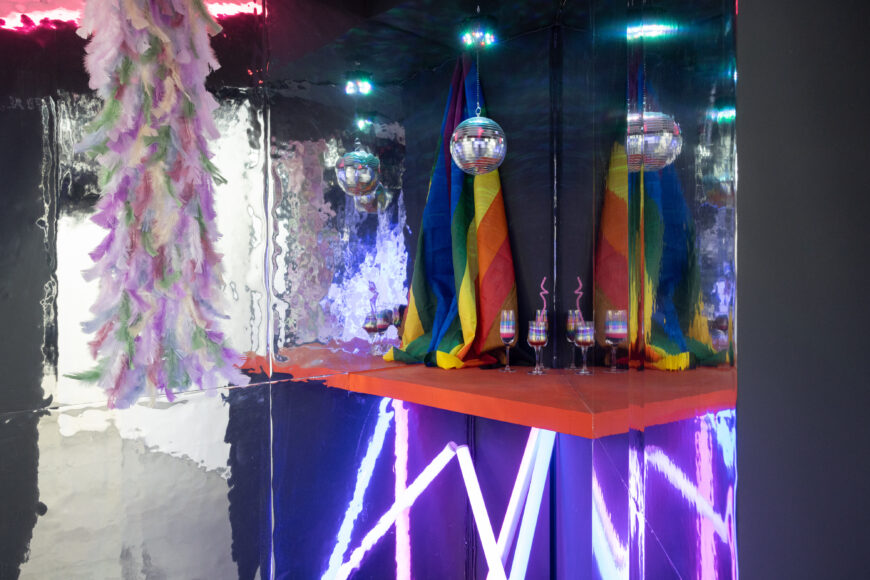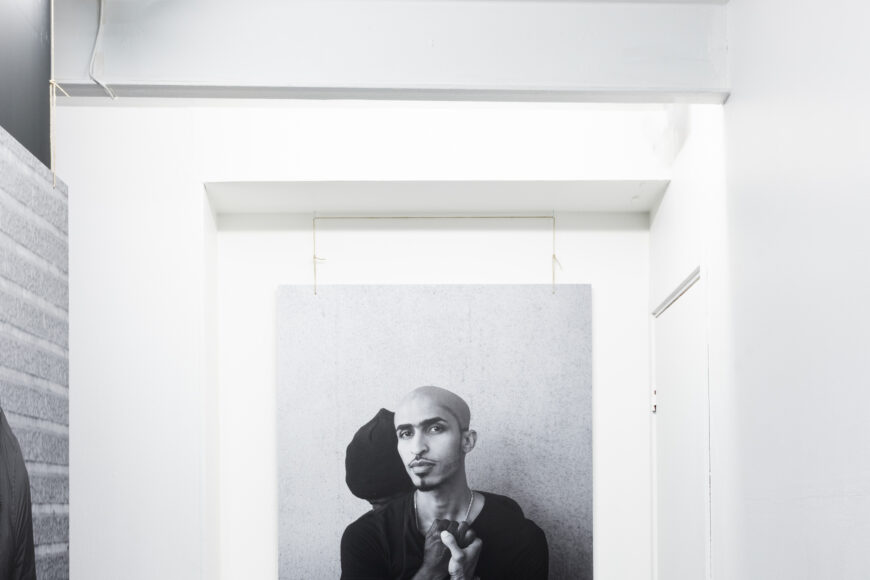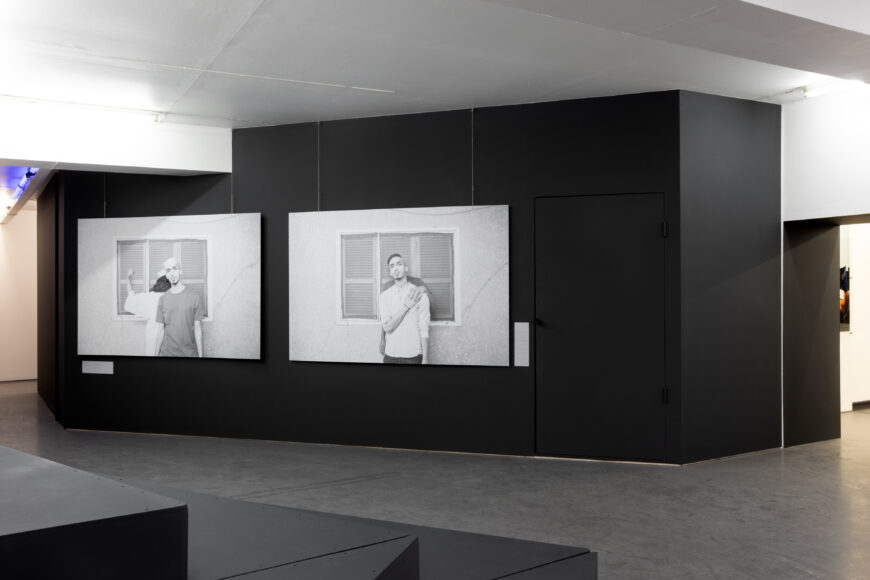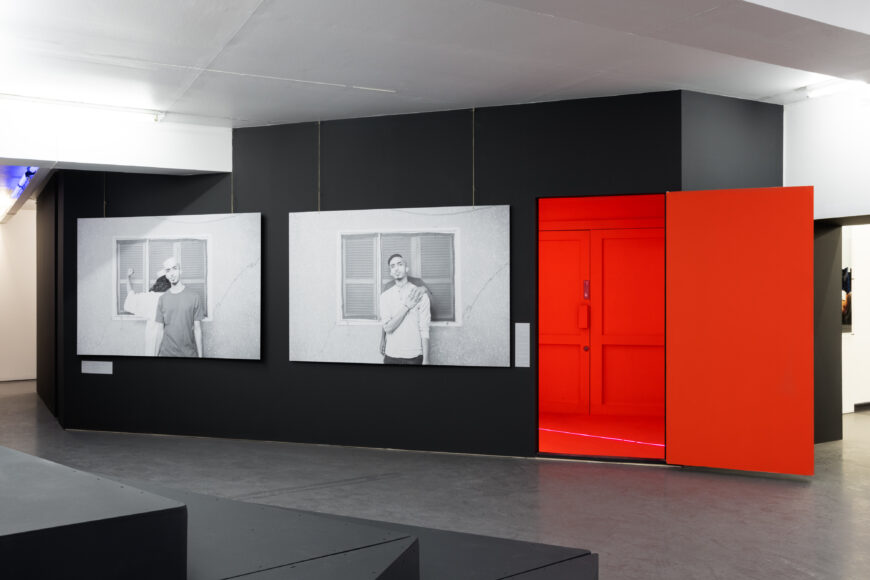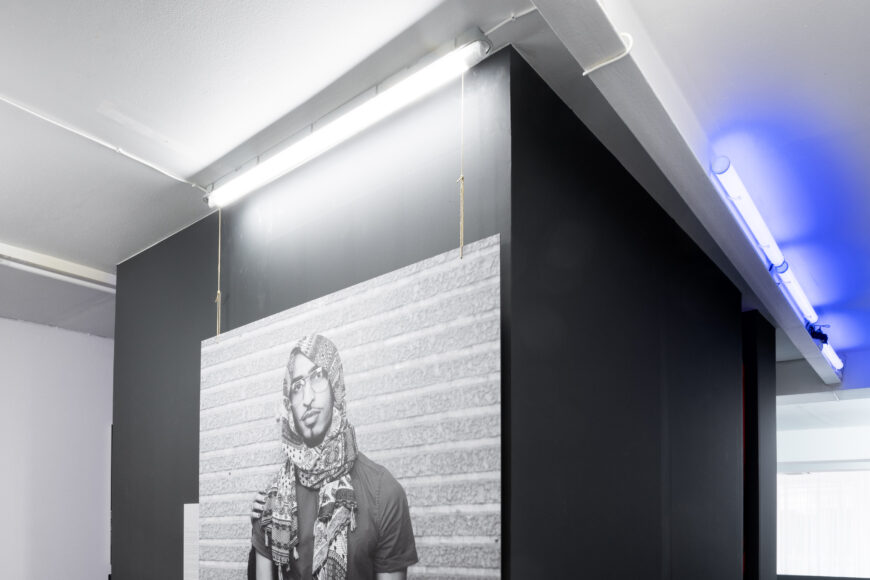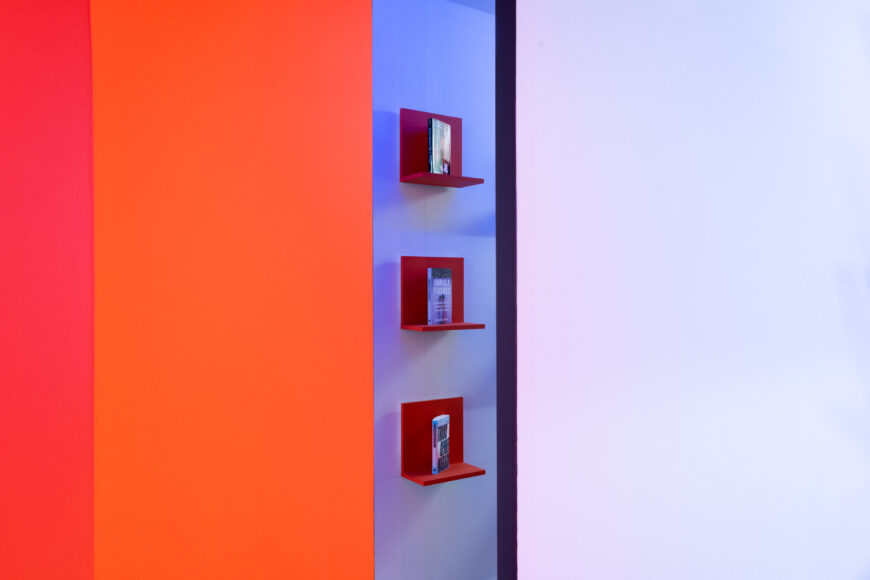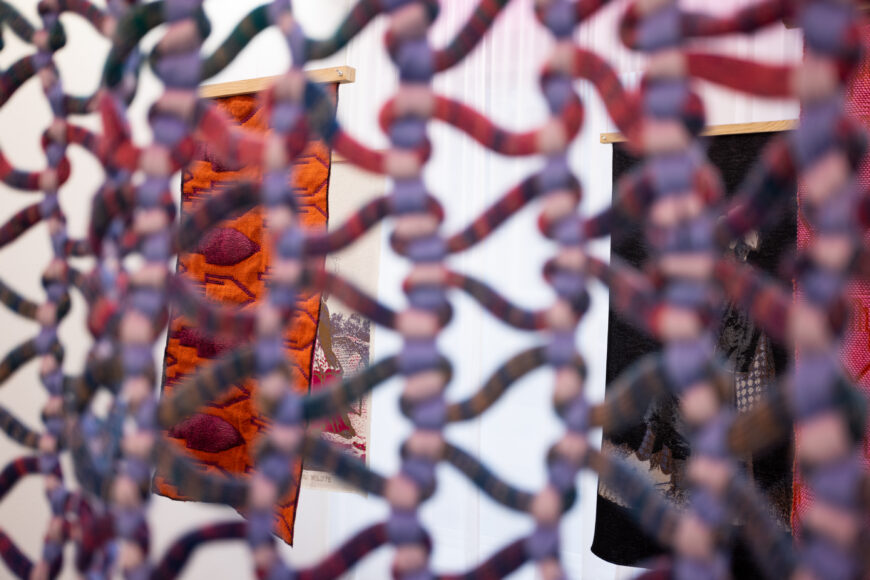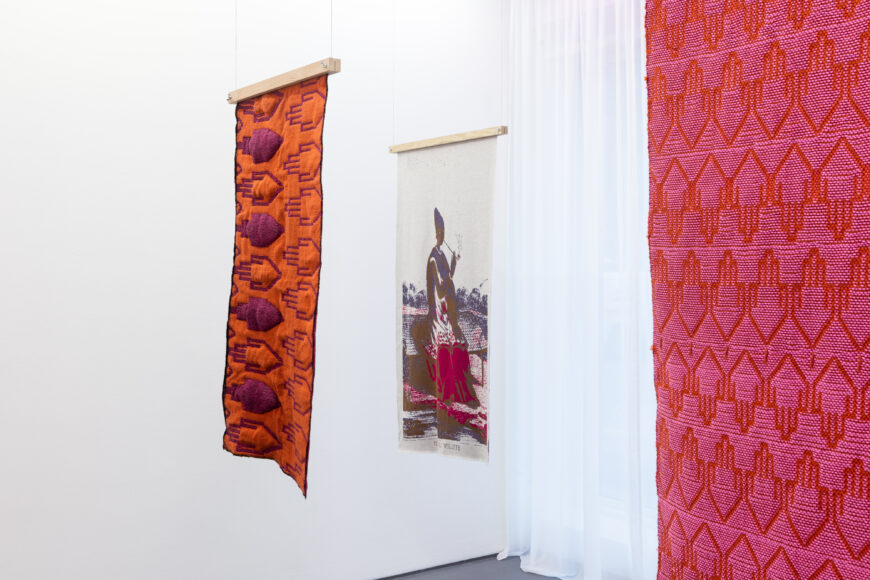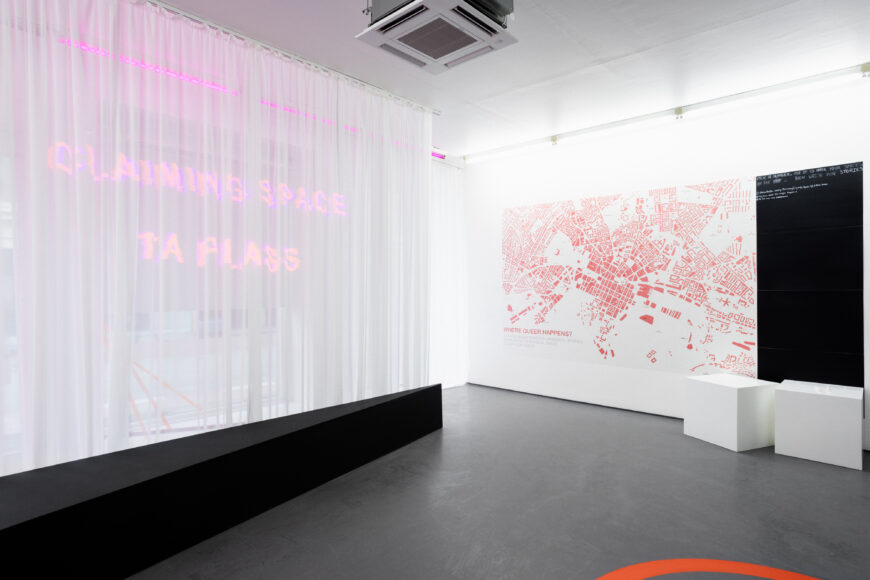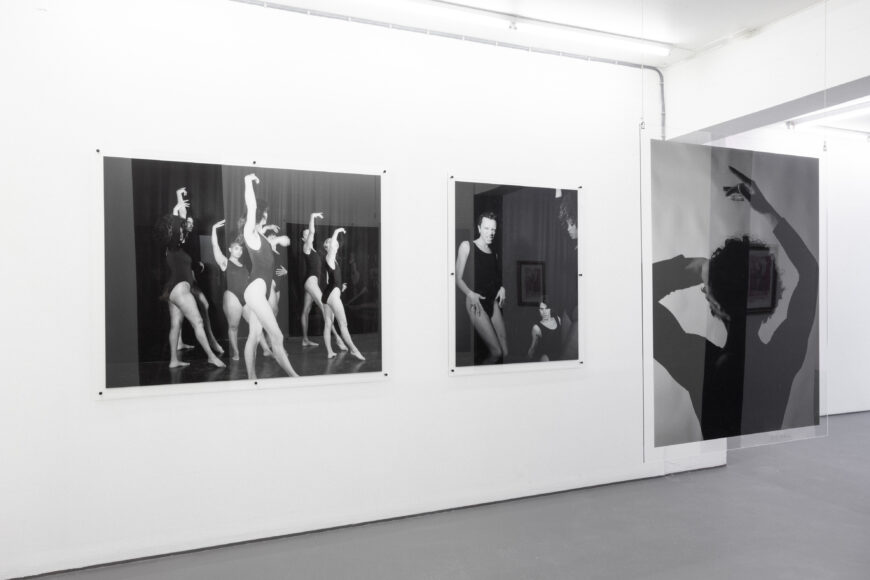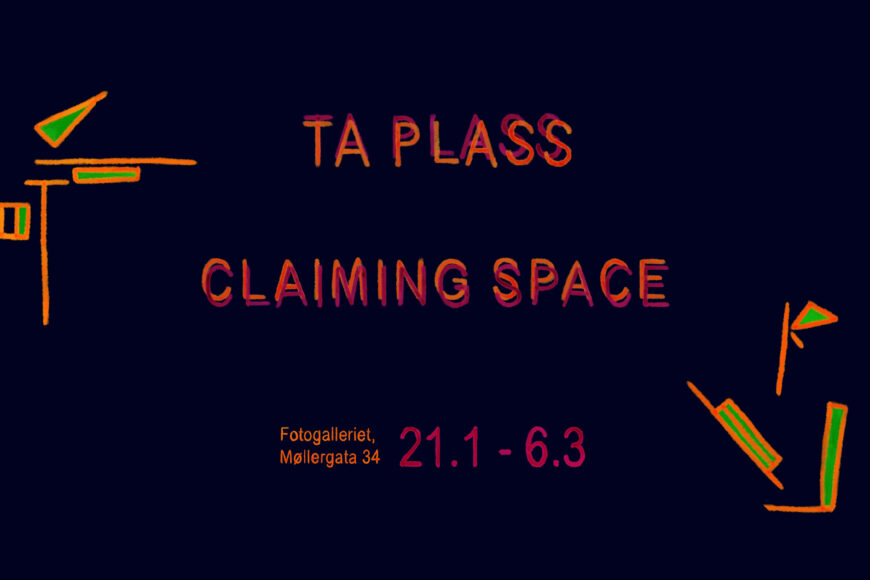CLAIMING SPACE
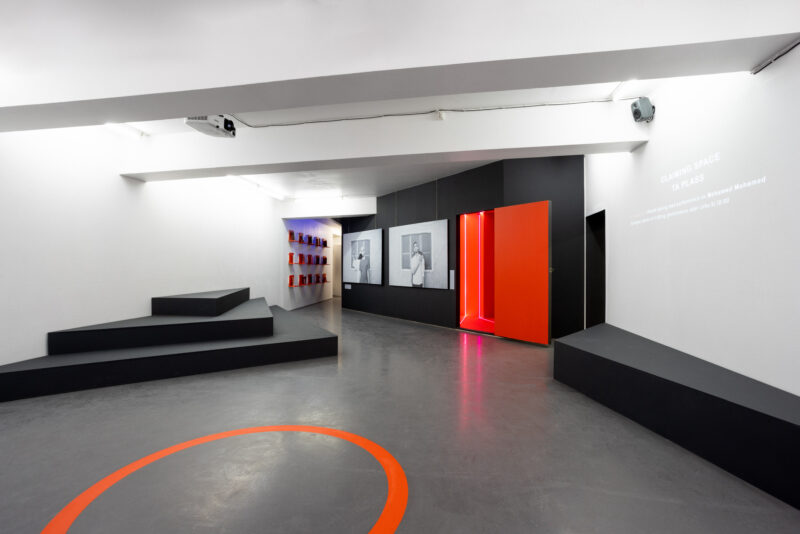
Based on discussions about how diversity, representation, and accountability should increasingly characterize the art field and public institutions, Fotogalleriet invited Skeiv Verden (Queer World) to curate an exhibition and a public programme in early 2022. The project Claiming Space is the first of its kind in a public art institution in Norway, with president of Skeiv Verden, Bassel Hatoum, as curator.
Exhibiting artists are Ahmed Umar, Chai Saeidi and Damien Ajavon, and performing artists are Carl Aquilizan, Hamid Waheed and Mohamed Mohamed, with an architectural concept by Antoine Fadel and coordinator Samer Hayek. The public programme is coordinated with assistance from Miki Gebrelul. As part of the exhibition period there will also be a library and reading list curated by Assata compiled by Piniel Demisse and a unique mixtape by Copenhagen based inclusive club collective Group Therapy.
For queer people with a minority background, the question of safety is central to issues around visibility and representation. As architect Antoine Fadel says, a “safe space” is not indicative of a specific form or function of a room or public space, or whether you are alone or sharing a space with others. Fadel says that rather, the experience or lack of safety is a “constant emotional and mental state, affected by a multitude of factors as you move through everyday life and various encounters.”
Read the full architect’s statement here.
In collaboration with Fadel, curator Bassel Hatoum and a project team are transforming Fotogalleriet’s exhibition space into a public forum to facilitate discussions on visibility, with work by artists Ahmed Umar, Chai Saeidi and Damien Ajavon and performances by artists Carl Azquilian, Hamid Waheed and Mohamed Mohamed. These are some of the foremost artists working on the topics of safety, protection, visibility, community, and tactility in Norway today.
As a public exhibition space for art, Fotogalleriet functions as a place for representation and image production that influences material inclusion and exclusion. As Norway’s primary interest organization for LGBTIQ+ people with a minority background, Skeiv Verden strives for an expanding of diversity in representation. Its mission is a society where everyone can live full lives, with the freedom to openly express their sexual orientation and gender identity without fear of discrimination.
To cite curator Bassel Hatoum:
With the exhibition, I want to make room for those of us who are repeatedly made invisible, marginalised or not taken seriously because we do not fit into a majority view. I want to create a debate about representation and the power of definition, and shed light on various factors in our lives that can help to give us safety or “unsafety”. I have invited some of Norway’s most talented artists, writers and public debaters to this exhibition. Many of these have had minority experiences and will be able to shed light on perspectives and challenges that Skeiv Verdens members have and encounter.
By giving Skeiv Verden the role of curator, a position of power and definition within the art world, Fotogalleriet believes different demands can come together to contribute actively and ask for new measures within and outside of the art field. The project strives to break with a structural pattern that lie deep within the art institution’s unconsciousness: aesthetic normativization. A series of events, produced with the assistance of Miki Gebrelul, will engage activists, artists, and spokespersons for individuals and groups from different backgrounds offer an interdisciplinary approach to politics of acceptance and belonging, and production and distribution of images.
Ahmed Umar (b.1988, pronouns: him/his) is a multidisciplinary artist who lives and works in Oslo, Norway. He graduated from Oslo National Academy of the Arts with a bachelor’s degree in Printmaking (2011–2014), followed by a master’s degree in Fine Art, specializing in medium- and material-based art (2014–2016). Umar’s practice is mainly based on stories and self- portraits that blend aspects of identity, personal experiences and ancestral connections to the Nubian empire in Sudan. It is informed by his conservative upbringing in Mecca, and Sudan, and often highlights the repercussions of existing outside of social and cultural norms. He uses his personal experiences as tools to discuss the silencing, demonizing, and compromising of queer lives in both the Sudanese and international context.
Damien Ajavon (b.1990, pronouns: they/them) is a queer textile artist, born in France, of Senegalese and Togolese origin currently based in Based in Oslo. Ajavon grounds his practice by positioning themselves in the world through their heritage, with work that explores the different methods in which textiles fibers can be manipulated by hand: knitted, knotted, braided, tangled, and woven. The interaction between visual and tactile experiences has always played an important role in their process; Ajavon uses his African and western influences as a vehicle for his textile storytelling and as visual markers of their creative approaches. It is through textile languages rather than oral ones that Ajavon has been unearthing and weaving connections with their ancestry. In doing so, Ajavon puts into practice their African cultures and conjures artistic gestures in honor of intergenerational and transatlantic learning to take space.
Chai Saeidi (b.1998, pronouns: they/them) is a visual and story-telling queer visibility artist and photographer. They are currently based in Oslo, Norway, with a background from Tehran, Iran. Their work explores themes such as gender, community and visibility. Queer individuals often create their own communities, resulting in non-traditional forms of intimacy and relationships. This is often shown in their work. Chai’s analog photography draws from a documentary tradition, more often touched with a free artistic expression.
Carl Aquilizan (b.1994, pronouns: he/him) is a Norwegian/Filipino dance artist based in Oslo with an education from Leeds, England. A prominent feature of his projects is a highly personal approach, expressed through an abstract, poetic and often distorted landscape. Using an interdisciplinary expression, he wants to be able to express personal reflections on gender, sexuality, and other current societal issues.
Hamid Waheed (b.1995, pronouns: he/him) is a filmmaker and visual artist utilizing moving images, writing and performing in various forms. The works often revolve around dramaturgies and modes in which queer desires are an instigator for emphasizing psycho-social structures, perceptions of time, and politics of death and violence. He also foregrounds histories and materialities in archived data. Works have been presented in a number of contexts, including the Museum of Cultural History, BOA and Kunstnernes Hus Kino (Oslo), METEOR International Theatre Festival (Bergen), Open Out Festival (Tromsø), Nikolaj Kunsthal (Copenhagen) and Rencontres Internationales Paris. In addition to this practice, he’s also part of the art collective HÆRK.
Mohamed Mohamed (b. 1994, pronouns: we) is a collective with its body as a meeting place, and art as a means of communication. We have a flat structure, where the goal is to give each other as much space as possible to just be and break out of the “self” as it does not accommodate all the background Mohamed Mohamed has. The most prominent in the group are Maxamed, Mo, Moa and Momo. Our work is multimedia, but there is great agreement that we are first and foremost a performance group that lean towards performing arts. Some of us are currently studying Fine Arts from the Oslo National Academy of the Arts, Department of the Academy of Fine Art. Identity and existential questions, the physical experience here, the limitations of the physical world are recurring themes in our projects.
Antoine Fadel (b.1991, pronouns: he/him) is an architect based in Oslo with a master’s degree in architecture from Beirut, Lebanon and an education in urban development and transformation from Paris, France. Antoine believes that architecture is an eternal art that will not only live throughout history, but it makes it. He is a multidisciplinary artist who likes to combine and challenge architectural approaches and artistic disciplines aiming to the dealing point between architecture, beyond concrete, and meaning.
Samer El Hayek (b.1987, pronouns: he/him) is an architect and scenographer based between France and Lebanon. With 12 years of professional experience in the fields of architecture and scenography, Samer has helped create through his design firm “in detail” several projects that vary between scenographies for theater, international television, and exhibition spaces, in addition to multiple interventions in architectural and urban fields. His projects extend from Beirut, where he launched his career, to Dubai, Qatar, Saudi Arabia, Jordan, France, and most recently Oslo. What holds all these diverse fields and locations together is Samer’s strong belief that storytelling, dramaturgy, and a well-thought human experience is a common global language that can elevate any design project to higher intellectual levels.
Skeiv Verden (Queer World) is a national interest organization for LGBTQI+ people with a minority background. They are an independent, religiously and politically independent organization that works purposefully for a society where everyone, regardless of their ethnic or religious origin, can live out their sexual orientation, gender identity or gender expression without experiencing discrimination. Their work is made possible due to dedicated and committed volunteers, members, contributors, partners, and active boards across the country.
Fotogalleriet’s principal operating support is provided by The Norwegian Royal Ministry of Culture.
The public programe is funded by The Norwegian Royal Ministry of Culture and The Fritt Ord Foundation.
